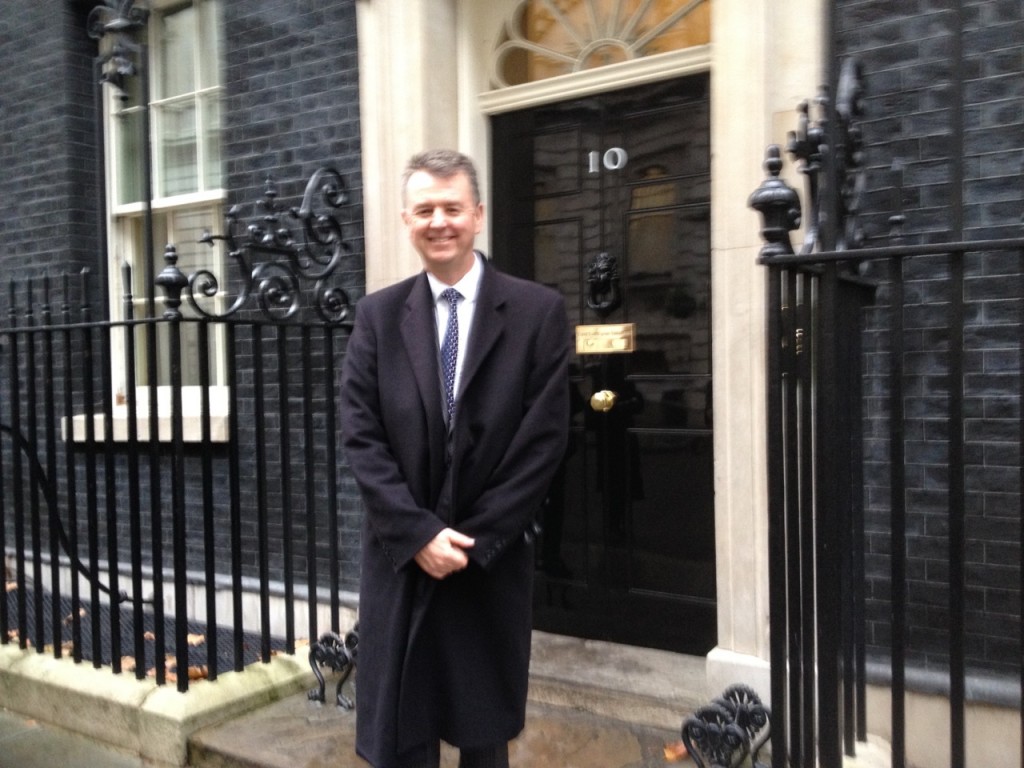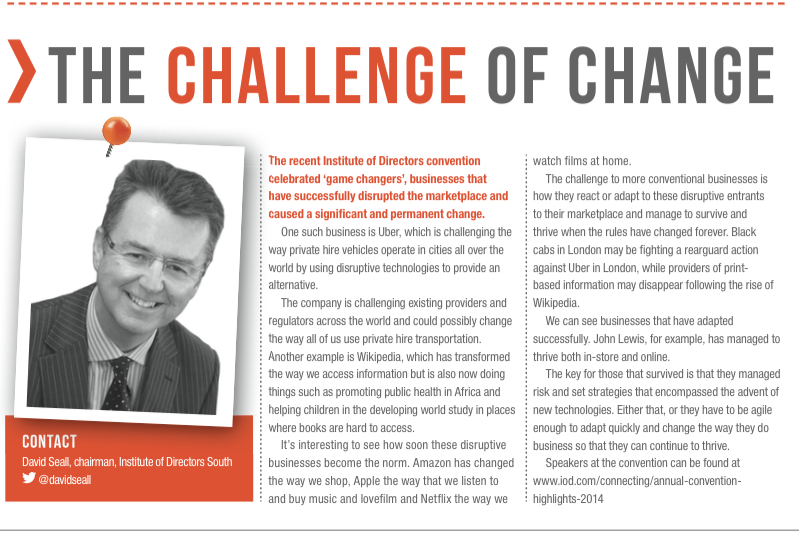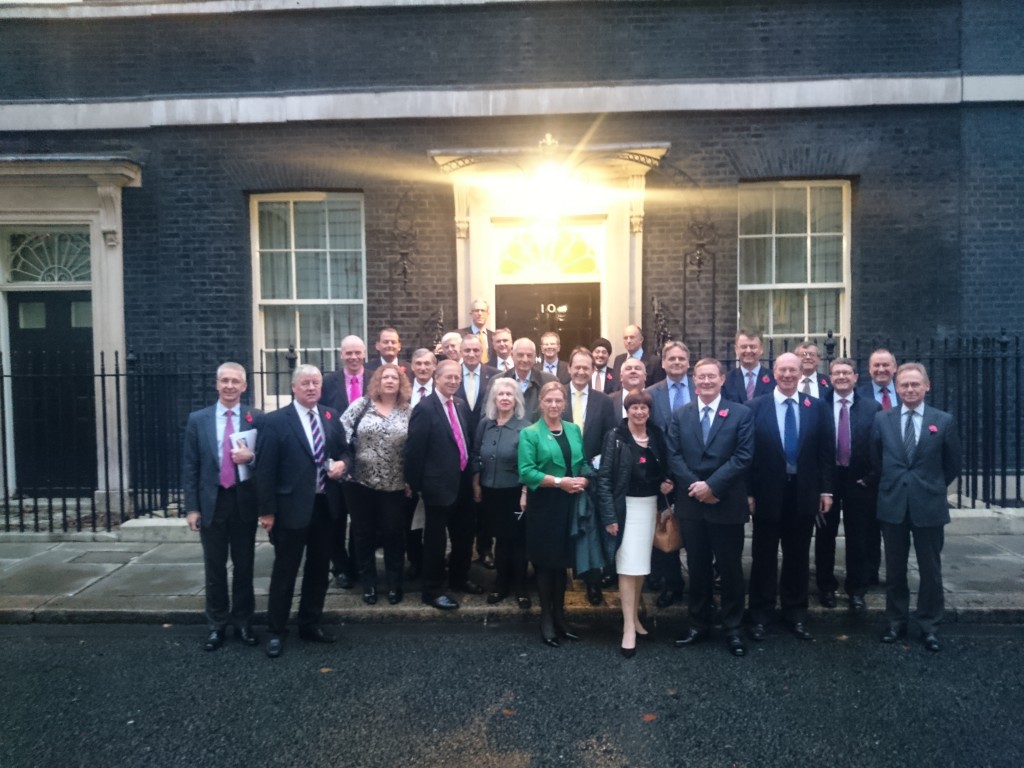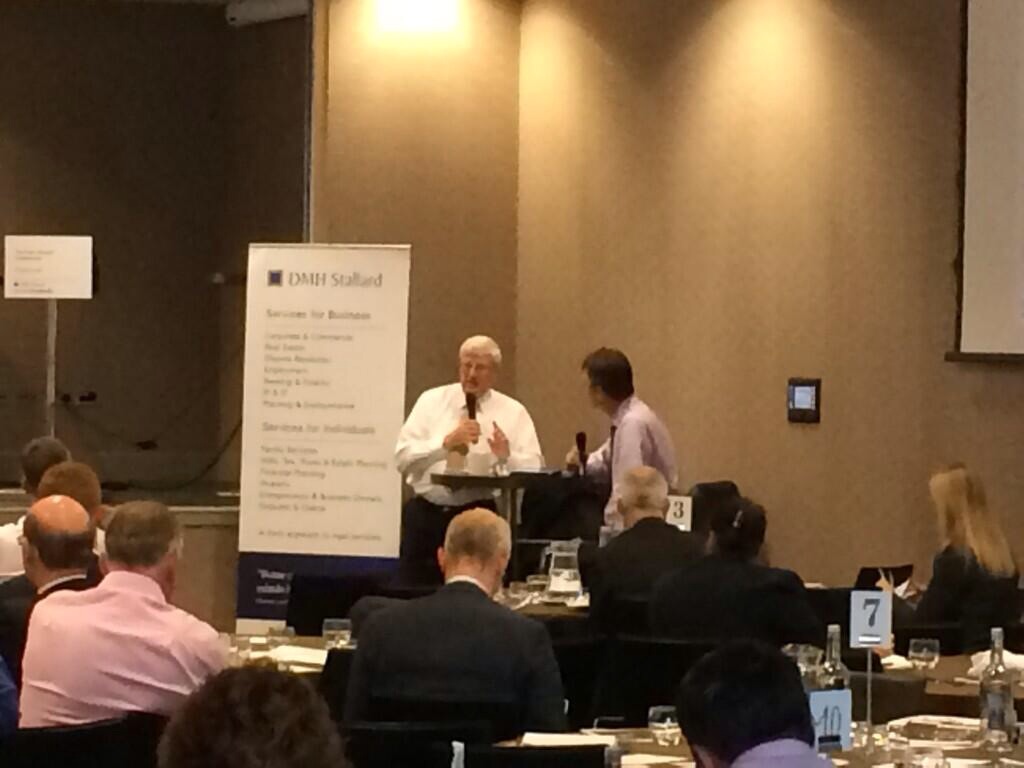
Flood tech gets smart
The following is an article created with PyTerra partner WSP describing how our smart system for “harvesting” water is being developed
Flood tech gets smart
17 November, 2014 | By Julie-Anne Ryan

Land owners that store flood water could soon find a market that makes it worth saving and selling at a later date, thanks to new prediction and control technologies. Julie-Anne Ryan reports.
Where’s the engineering judgement? That’s what NCE challenged back in January during the peak of the winter flood crisis. Now, it seems, some is appearing. As while mainstream media continues to obsess about dredging and flood barriers, water experts and engineers have been working towards the dream of a technological system that would address the balance between flood and drought.
That work has now culminated in a new solution bringing together existing models and smart technology that will respond to weather forecasts, work out where the predicted rainfall will be needed, gather it when it falls and deliver it effectively using a computerised network of water control devices. The perfect balance will be that surface flooding will be controlled and stored for use during dry periods.
One of the key benefits of being able to harvest water in wet months is that land owners could have their land assessed for the potential to deliver a range of water service units, and then, at a local catchment level, to trade those units to stakeholders that provide services such as water control for agricultural or industrial processes and infrastructure projects.
A new business called PyTerra has been established to develop this system alongside consultant WSP and Imperial College London’s department of civil and environmental engineering. PyTerra managing director David Arscott began looking for a new project involving smart technology back in 2012. He focused on flooding, saw the importance of working upstream and realised that there needed to be cross sector technical solutions to the problems that the water industry faced.
These problems were divided into three silos, he says: flood, water supply and environmental protection. Tackling these three together and providing a networked solution can produce huge gains, including the reduction of downstream flooding and faster drainage of ponds to make ready for the next incoming weather front.
Working with Imperial College senior lecturer in water resources and environmental change Wouter Buytaert, PyTerra has this year been developing the system further, engaging with technological partners and looking for funding. The first pilot study, which has a budget of £125,000, is being funded by investors and crowd funding, but the aim is to secure £900,000 to pay for activities over the first two years.
Affordability of the concept is key in its transition to reality, but WSP UK head of water Ola Holmstrom says that the SCADA systems that provide the interface with the hydraulic devices are already in use in all sorts of areas. “Using it to take water off a flood plain is not a new thing, but bringing it all together like this is new. We didn’t do it before because it was prohibitively expensive,” he says.
“It’s coming to a feasible structure now, and it’s getting cheaper to do it on a smaller scale. The more you have around, the smaller the individual parts can be, because it’s a bigger whole. A sensor of the type that we would need to look at water levels, for example – when we started 20 years ago the price of a sensor was £3,000 to £4,000 in 1990s prices. Now they are only £200 to £300. It has dropped an order of magnitude.”
Arscott describes the proposition: “Think of the environment as a big sponge, which is the catchment area, the river basin. That sponge will always be holding a certain amount of water in it, and at times has the capacity to hold more. We look at how much water is in it, how much can be squeezed out of it, and what the remaining capacity is. In other words, we look at predicted rainfall, and then at how the remaining capacity of the sponge can hold it.
“When rain comes, we capture it into a structured water network – streams, ponds, wetlands,” he continues. “If necessary we can enhance those items by introducing new wetlands, new ponds, new pipework; and we put in hydraulic hardware like sluice gates with valves, flood barriers if they are needed. We capture the water, use it and release it when necessary – by doing that, we can provide a range of water services.”
This goes back to the three silos, he explains. “The system will hold water upstream by mitigating downstream flooding – and there is a big groundswell of support for implementing downstream solutions. We can create a network of micro water suppliers, who can increase the supply of water into the future – in fact not just increase supplies but make suppliers more resilient and improve the quality of water. And in terms of biodiversity, we can improve the quality of water being put back into the water courses.”
It is all done by using a central computerised control system that takes a huge amount of “big” real time data from sensors out in the field, satellite imagery, weather forecasts and hydrological modelling. The central system will look at all that information, says Arscott, but also at the targets that the local stakeholders will have – possibly different targets for flood control and for water supply. “The system takes all the data and looks at the targets set on a manual basis, then sets out an optimised set of instructions to the field – the sluices, the valves and so on – to achieve those targets,” he explains.
There is clearly a great deal of intellectual work and collaboration between the parties involved. Arscott applied for a patent at the beginning of the year to cover the system, which he describes as “a sophisticated solution for a complex problem”. The system is “self-learning”, he says – there is a constant drive to improve weather predictions, and the system is trying to bring together a number of modelling approaches into one hydrological modelling system.
“This is where WSP comes in,” he says.
The trading aspect of the system appeals particularly to Arscott, who sees it as an opportunity for individuals and organisations to put a proper value on water. Landowners will be able engage with a whole range of stakeholders, creating a market for water trading, like carbon trading.
Holmstrom agrees. “It’s crucial that we get smart in our approach to flooding, and being able to manage a whole catchment at the push of a button is about as smart as it gets,” he says. “When the water industry is deregulated in the next few years, and smaller suppliers can contribute to the ‘water grid’ in a similar way to electricity feed-in tariffs, this network approach will create an opportunity for adjoining land owners to jointly sell their water services.”
Arscott adds: “We will have to work closely so that we can broker an agreement between landowners and stakeholders.” So far, he says he has had a positive response from a range of organisations with rural interests, including the Surrey Wildlife Trust, the National Trust, the Woodlands Trust and the National Farmers Union.
“The necessary political will is there now to do this, but we will need the water companies to come on board,” he says.
Arscott sees a future where all the different sectors will increasingly work together and look for the kind of multi-beneficial solution provided by this system.
Emily Beadon
UK Media and Reputation Manager
WSP UK, WSP House, 70 Chancery Lane, London, WC2A 1AF
Tel: +44(0) 20 7314 4644
Mob: +44(0)7881 267787
Website: www.wspgroup.co.uk
or
David Arscott
Director PyTerra
Tel +44 (0) 7958 916963
Back to No10
Visits to No 10 must be like London buses- you wait forever and then two come along at the same time.
After a visit to 10 Downing Street with members of IoD Council two weeks ago, another IoD delegation was asked to attend another meeting this time with the Prime Minister. The meeting itself was subject to the Chatham House rule but it was very worthwhile to discuss the pressing issues of the day with the Prime Minister.
The challenge of change
My latest article for South East Business magazine
The full article can be found here
http://www.southeastbusiness.com/print-edition/november-2014
Managing Manufacturing Risk
I recently wrote a guest article for Zurich Insider detailing how smaller manufacturing companies could manage and mitigate risks to their business.
The article can be found here
http://insider.zurich.co.uk/market-expertise/managing-manufacturing-risk/
Visit to Number 10 Downing Street
It was very interesting to be part of the IoD Council delegation to 10 Downing Street last week.
A lively debate with senior Ministers was held.
Improving The Effectiveness Of Your Board
Improving The Effectiveness Of Your Board
How to Choose the Right Person to Succeed You Interestingly most organisations don’t succession plan very well. This probably goes back to the fact that many don’t do thorough risk management. Within a process of evaluating risks the issue of what happens to key staff should loom large. The chance of this happening, the effect of it, plus the proposed solution and who is responsible for carrying it out is essential as part of the risk management process.
This risk management is essential both in owner managed “family” businesses and particularly charities, where all too often the Director of Chief Executive leaves and the Chair is left holding the baby after the notice period has been served and before a new incumbent can be found. This places even more pressure on the recruitment process and the temptation to “cut corners”. In a family business it’s key to be developing family members over a long period of time so that they can build up the knowledge and experience to be a success in the roles they and the owner would want them to do. It’s also essential that they are supported by the right cadre of senior staff to make their appointment a success.
Risk management should be part of the “Management Review” system that is built into the processes and procedures that determine the operation of the enterprise. So the key to start with in succession planning must be to have evaluated the risks to the enterprise of key staff leaving and have a plan in place both temporary and long term to manage it. Both the Chair and The Chief Executive should discuss this at regular intervals to determine strategy.
When a key member of staff leaves it’s not always straightforward that the individual is replaced by a “clone”. It could be an opportunity to change the management structure or bring in someone with a different set of skills and approaches that will help develop the enterprise strategically. Aligning the recruitment to strategic direction is key. “Buggins’ turn” or promoting from within or grabbing someone quickly from outside will not do.
The 9 Keys to Effective Succession Planning
1. Have key staff positions as an integral part of the risk management process
2. Evaluate and quantify the risks of losing key staff
3. Have a plan in place to deal with those risks that is in alignment with the strategy of the enterprise
4. Structure times to regularly review the plan
5. If it happens take the time and effort to manage the recruitment (or promotion) process properly
6. Make sure that the definition of the role and the experience and personality of the person to do that role aligns with the strategy
7. Use external help or opinion to test and evaluate your thoughts and approach
8. Consider restructuring your team as part of the process. A person leaving can be an opportunity not only a threat.
9. Make sure that the person recruited fits the dynamic of the team and the way you want the team to develop.
Open Sesame – SME success for South East Business
My latest blog on the DMH Stallard “SME Rocket” is about a small business in Surrey with an innovative solution to help those confined to a wheelchair.
You can find the story here
http://smerocket.net/2014/10/09/sme-success-southeast-business/
Looking after the interests of the South East
My latest article in South East Business Magazine looking at the aftermath of the Scottish Referendum and the impact on the South East of England
The article and full magazine can be found here http://www.southeastbusiness.com/print-edition/october-2014
IoD South East Director of the Year awards
Nominations are now open for the IOD Director of the year awards for the South East.
The finalists will enjoy attending a marvellous dinner similar to the one we held at Pall Mall back in the summer. Lets hope that we get to see the best in business leadership again
You can enter here http://iod-awards.co.uk/Index.aspx
Interviewing key business figures
I seem to have created some sort of career interviewing people!
I have interviewed Charles Morgan former CEO of Morgan Cars and Stuart Garner CEO of Norton Motorcycles in front of a live audience at the Knowledge Peers Conferences at the Sadlers Wells Theatre in London. Both of them are passionate about British Manufacturing and the products that they make.
Here, I’m interviewing David Hodge the Leader of Surrey County Council for the DMH Stallard #fastgrowth event in Guildford during the summer. David was great at stirring up the audience and flying the flag for Surrey and the South East.







Recent Comments